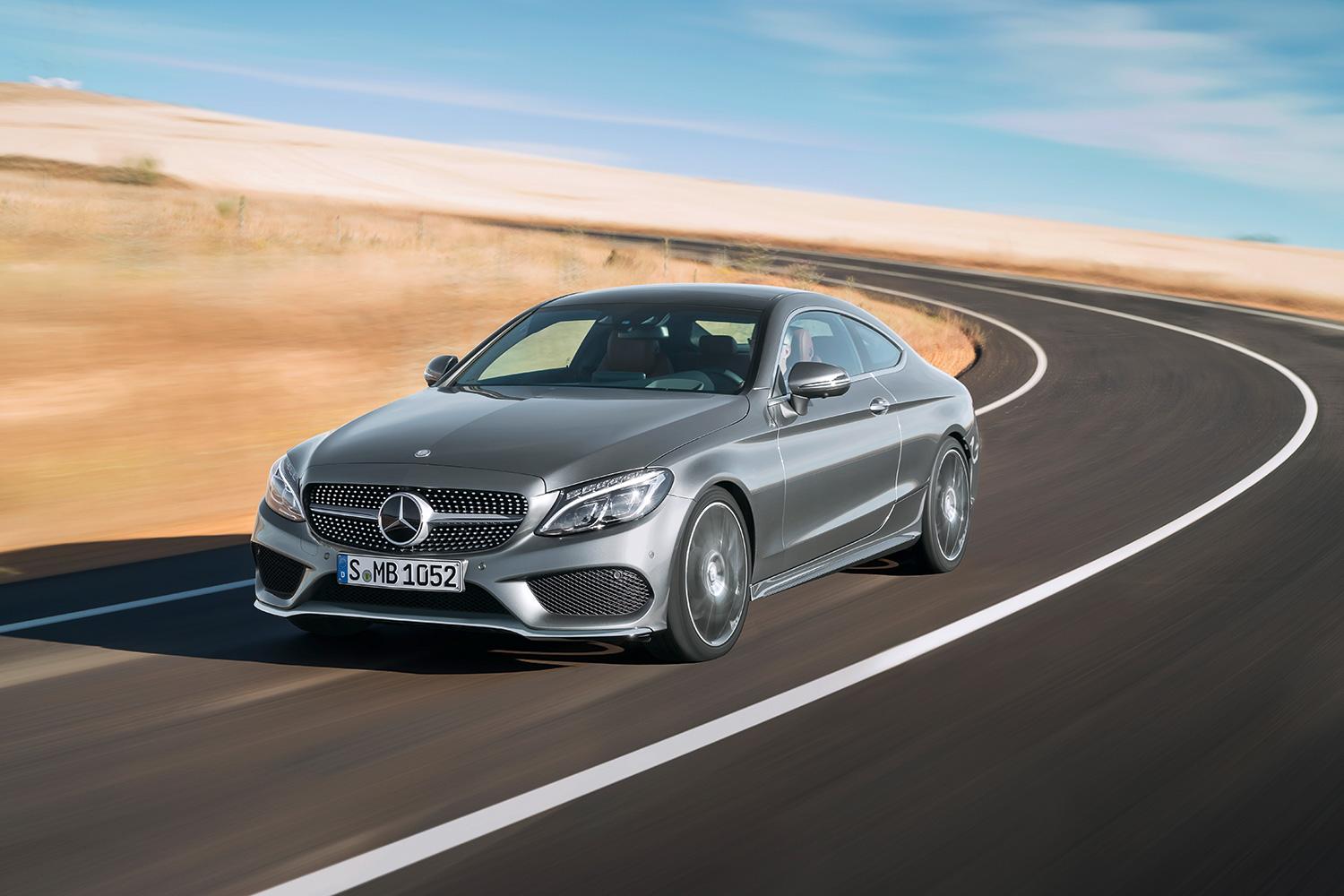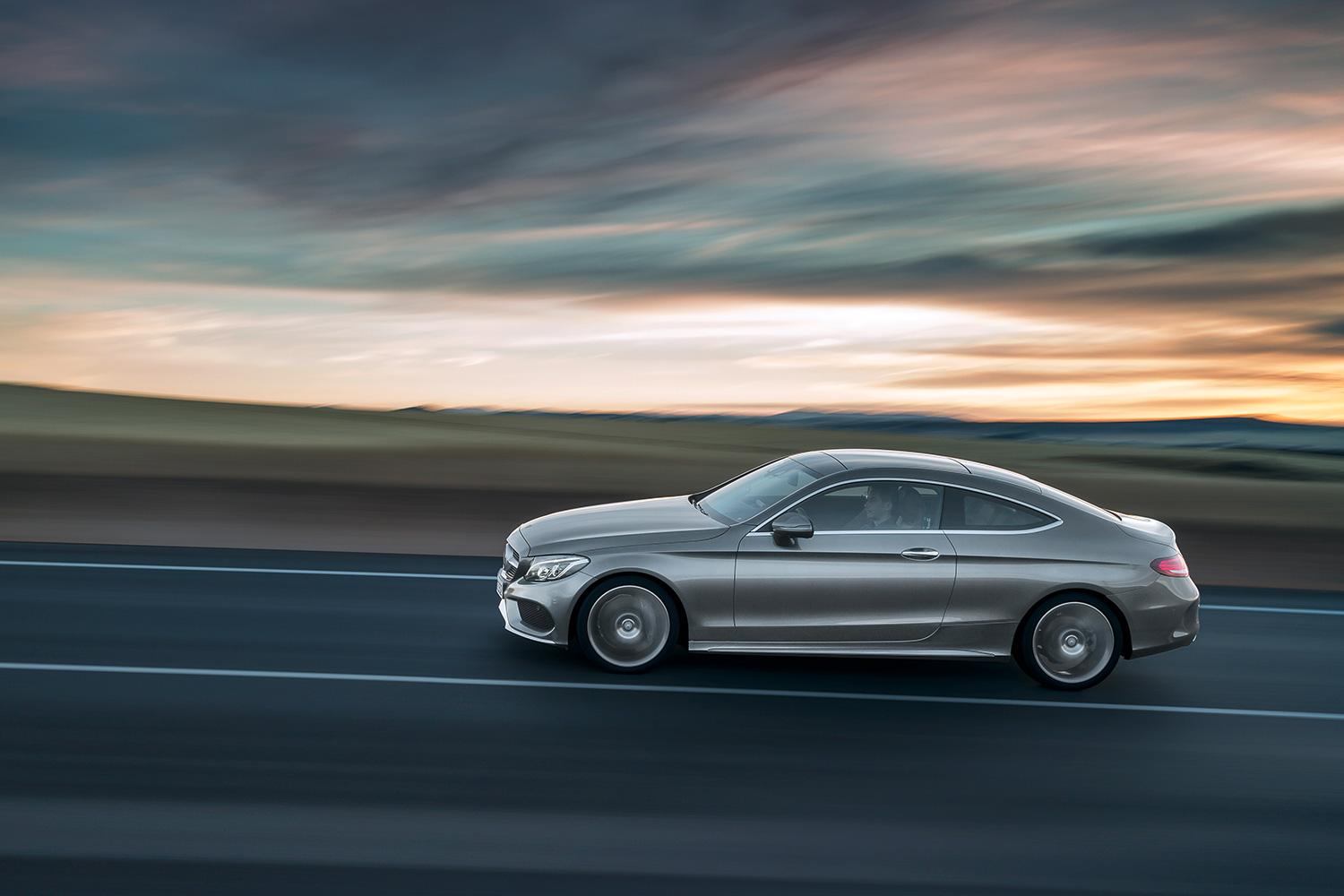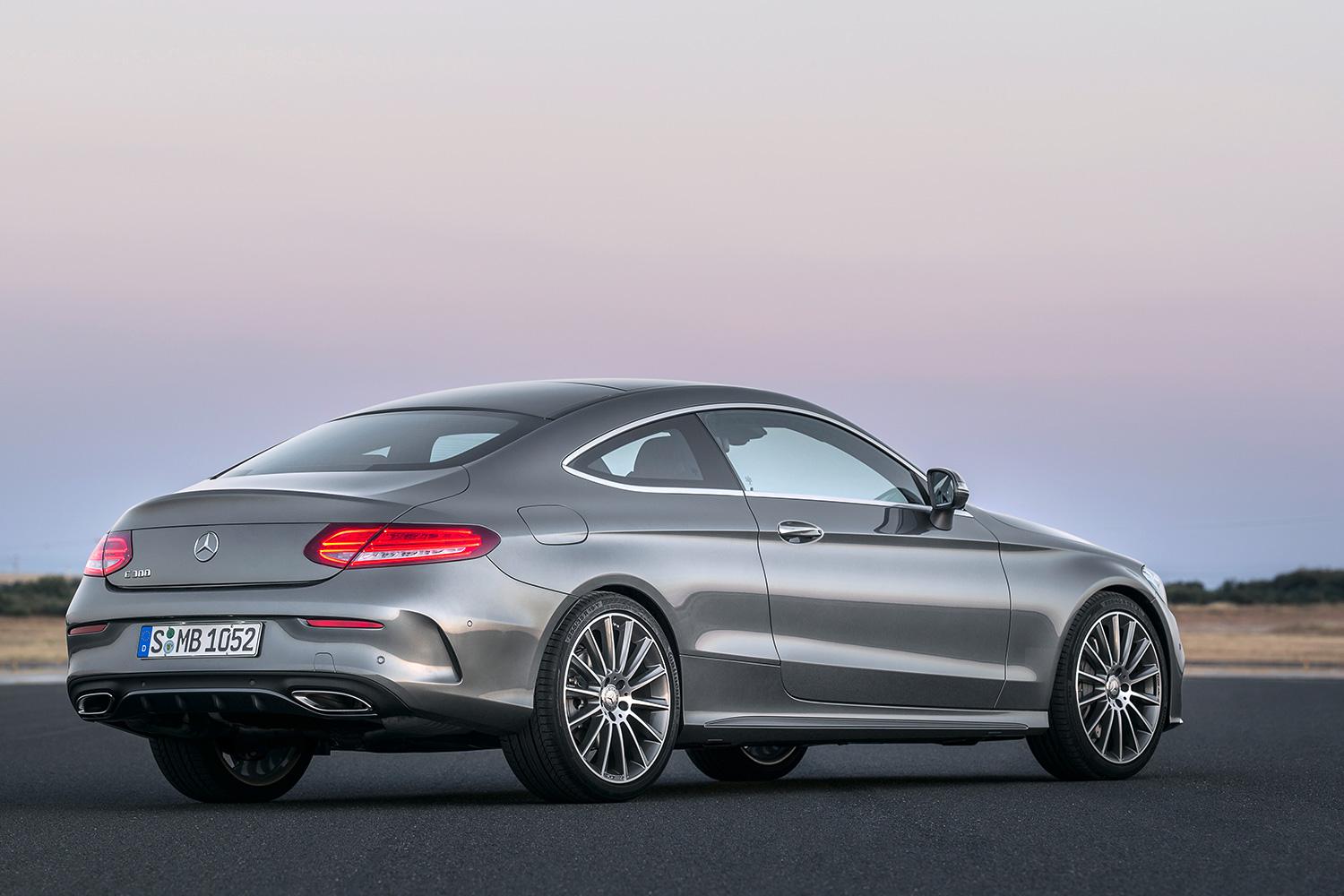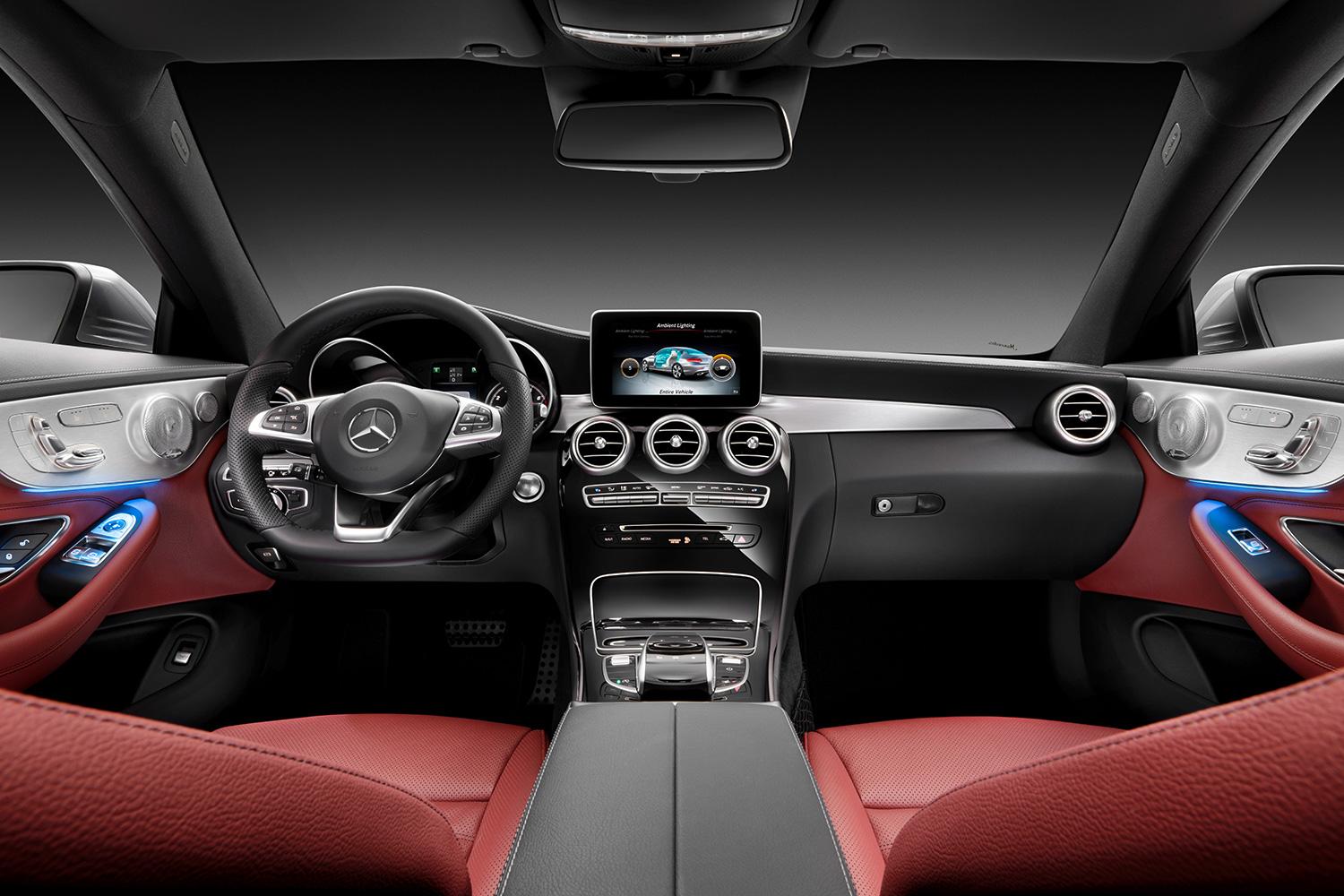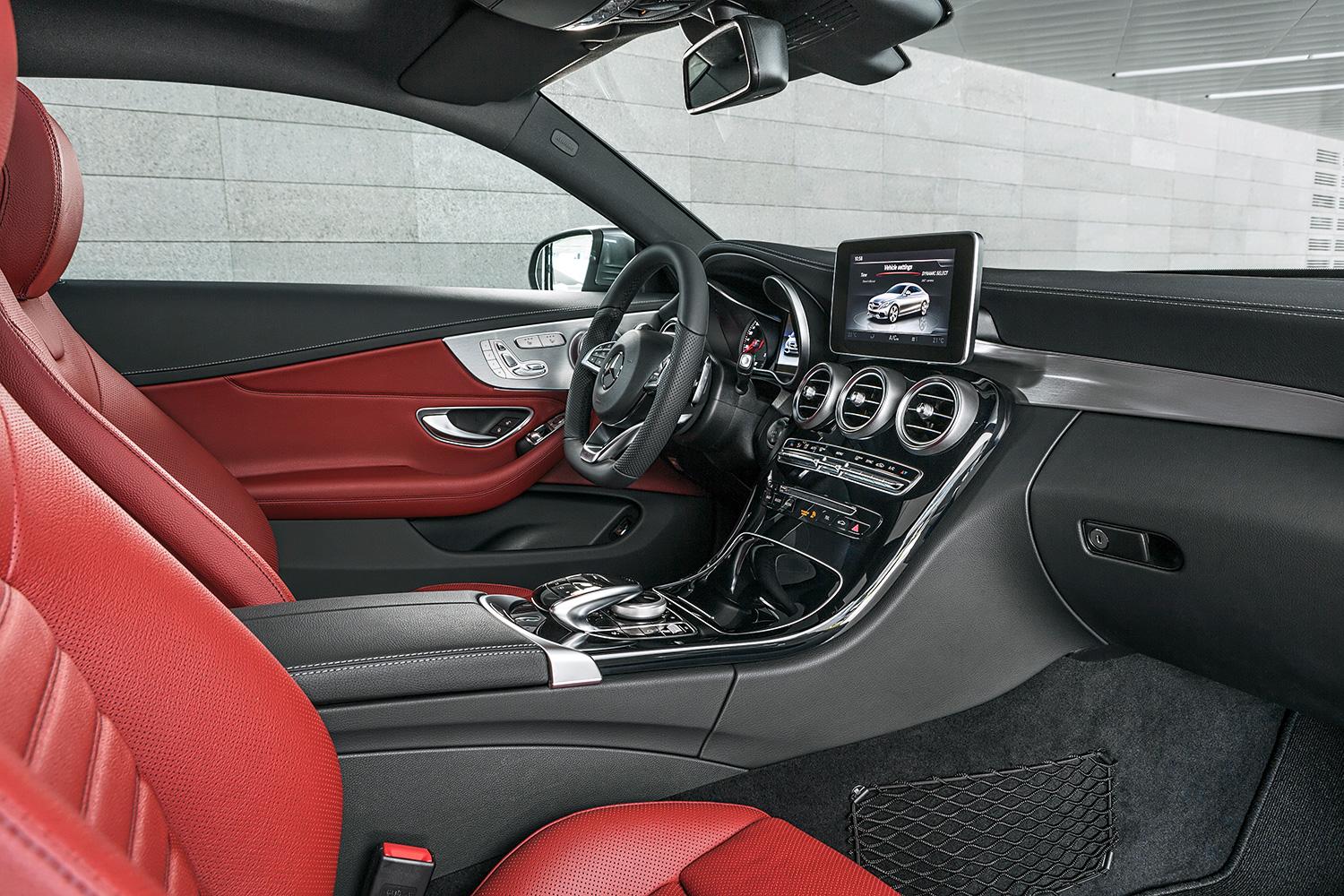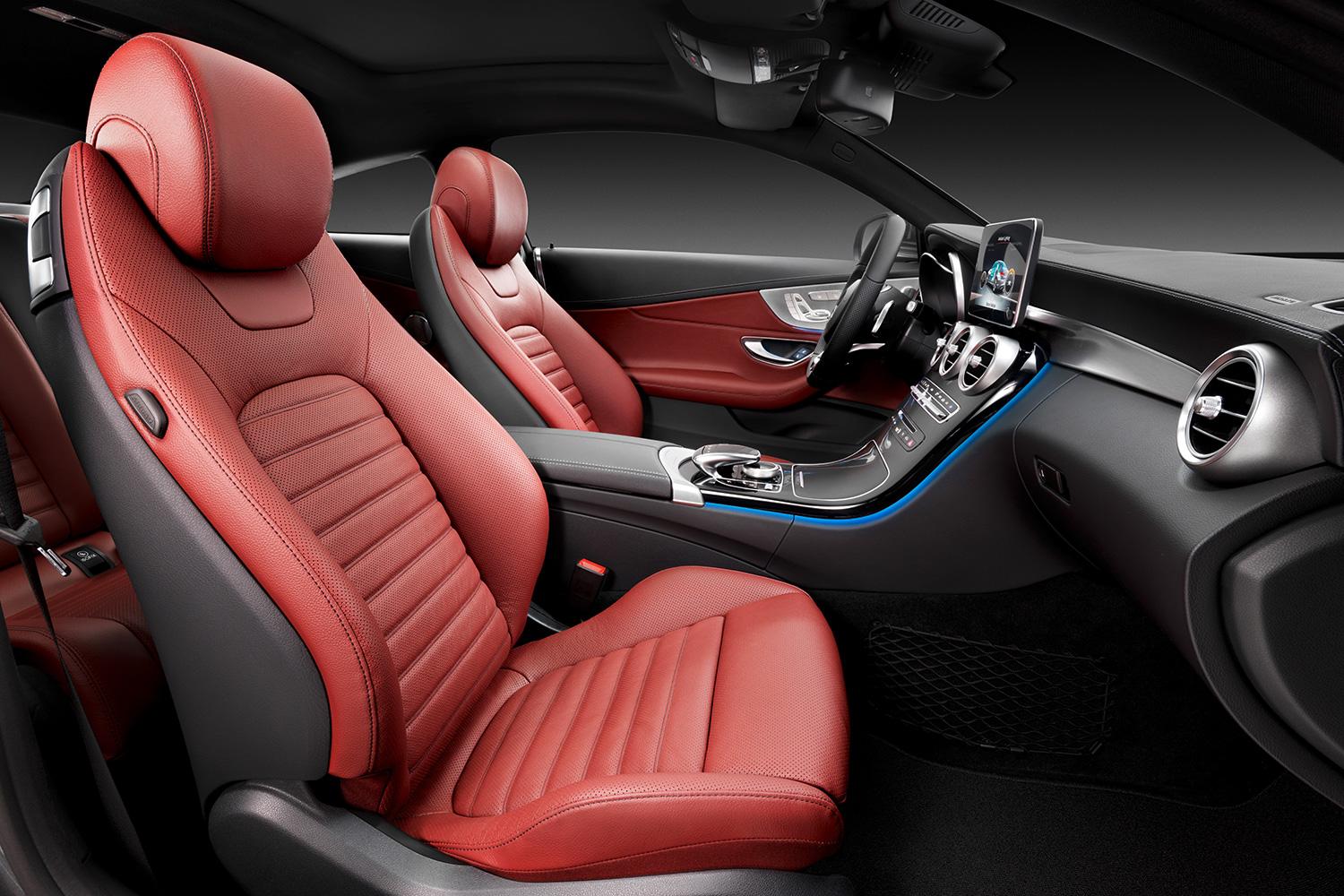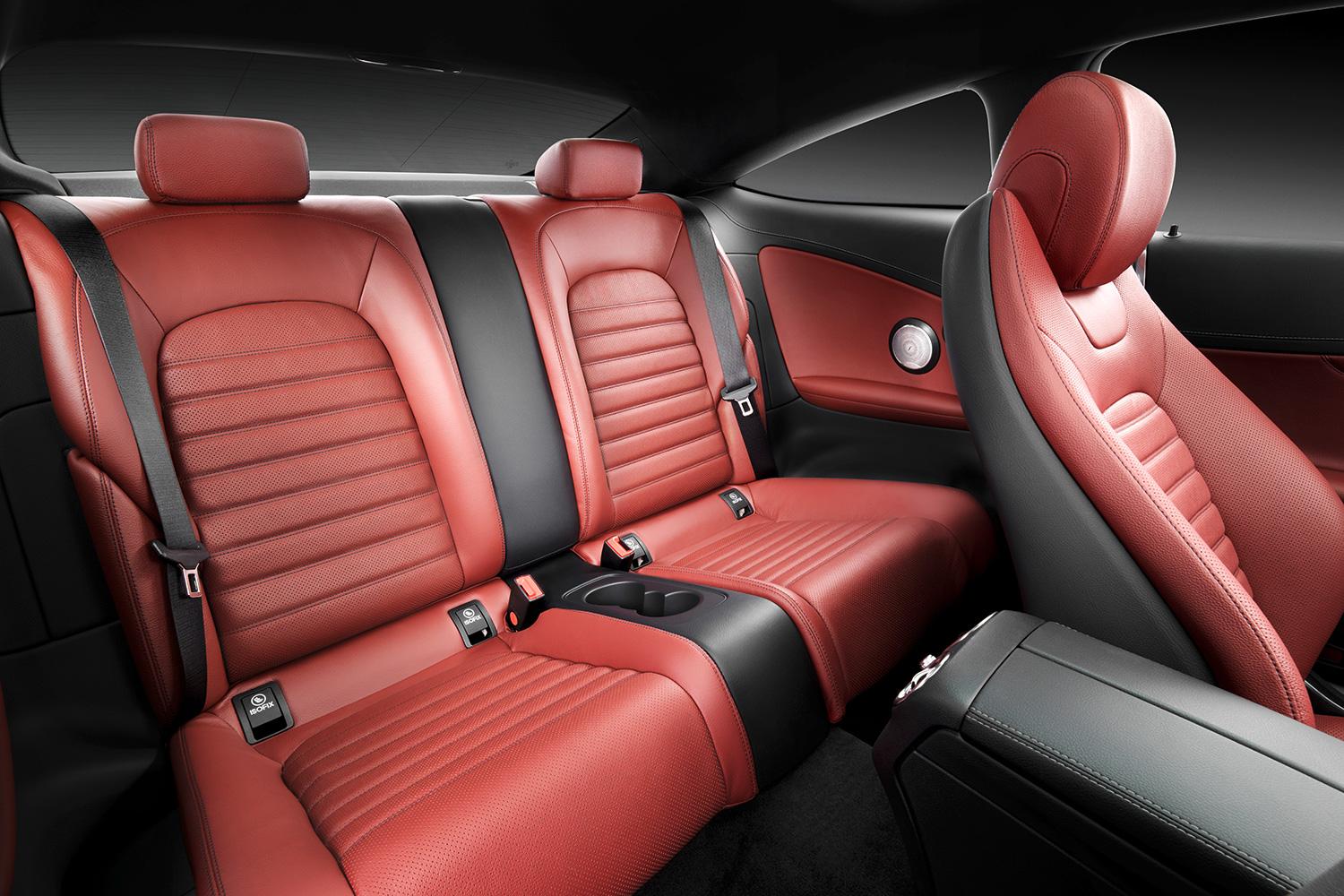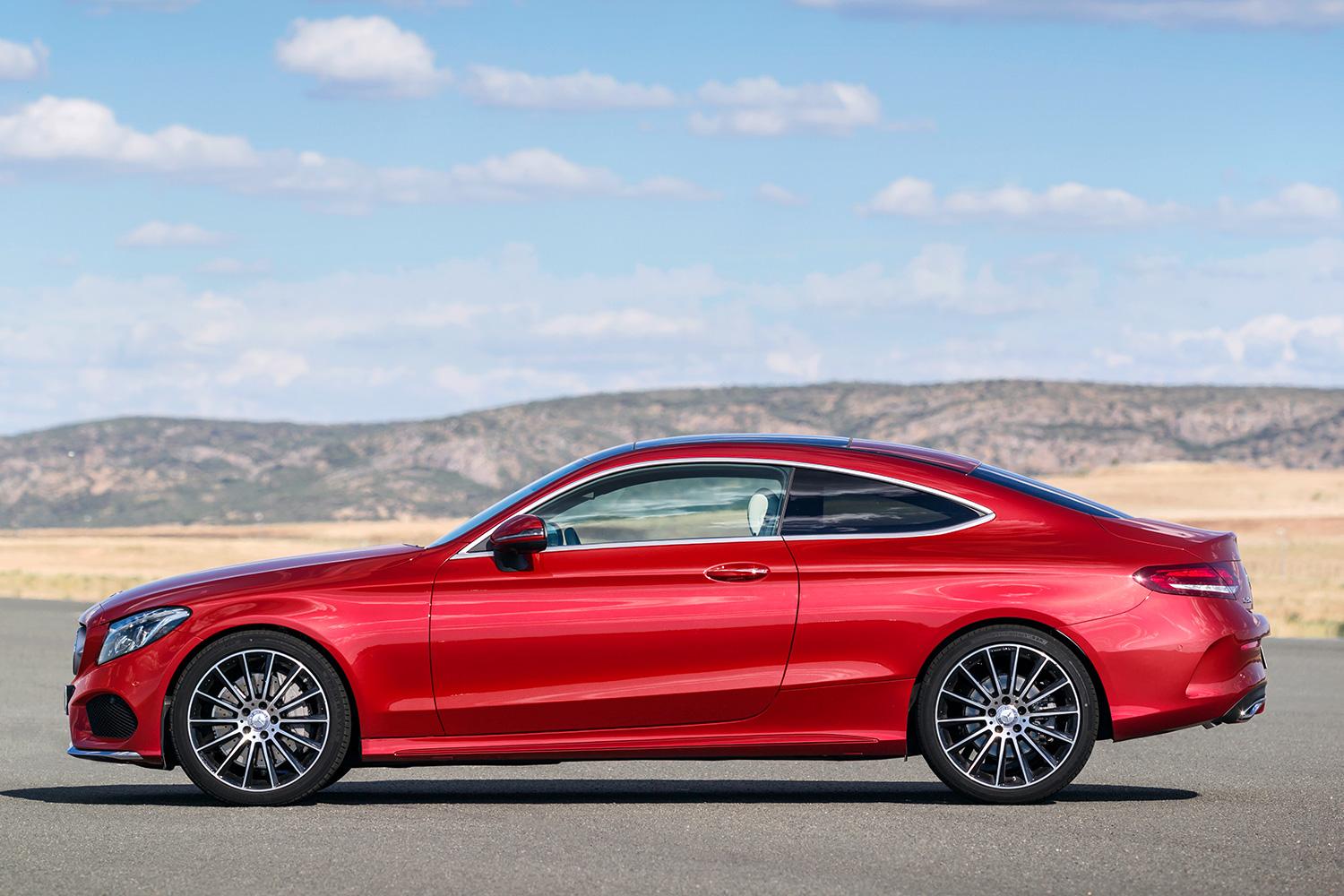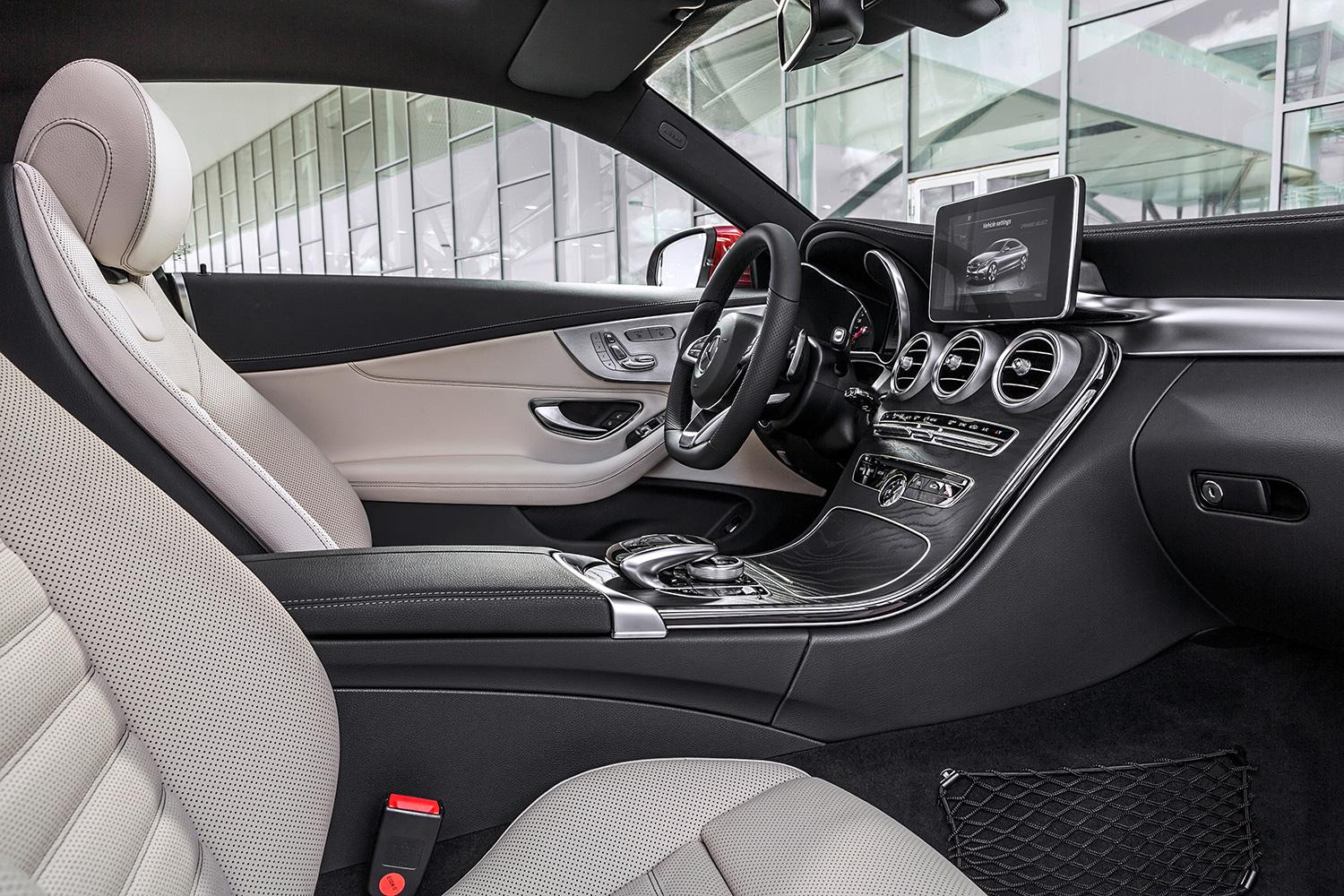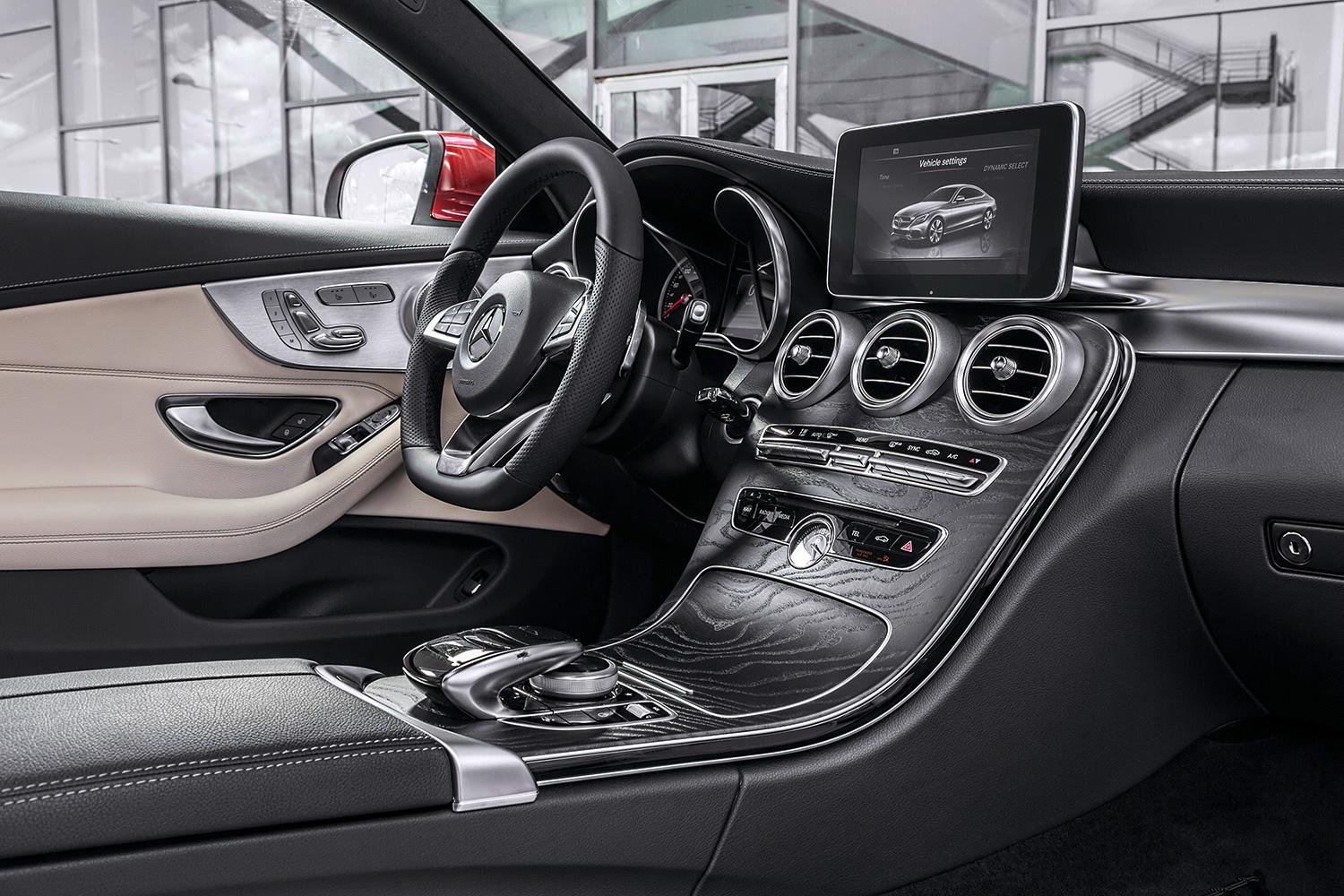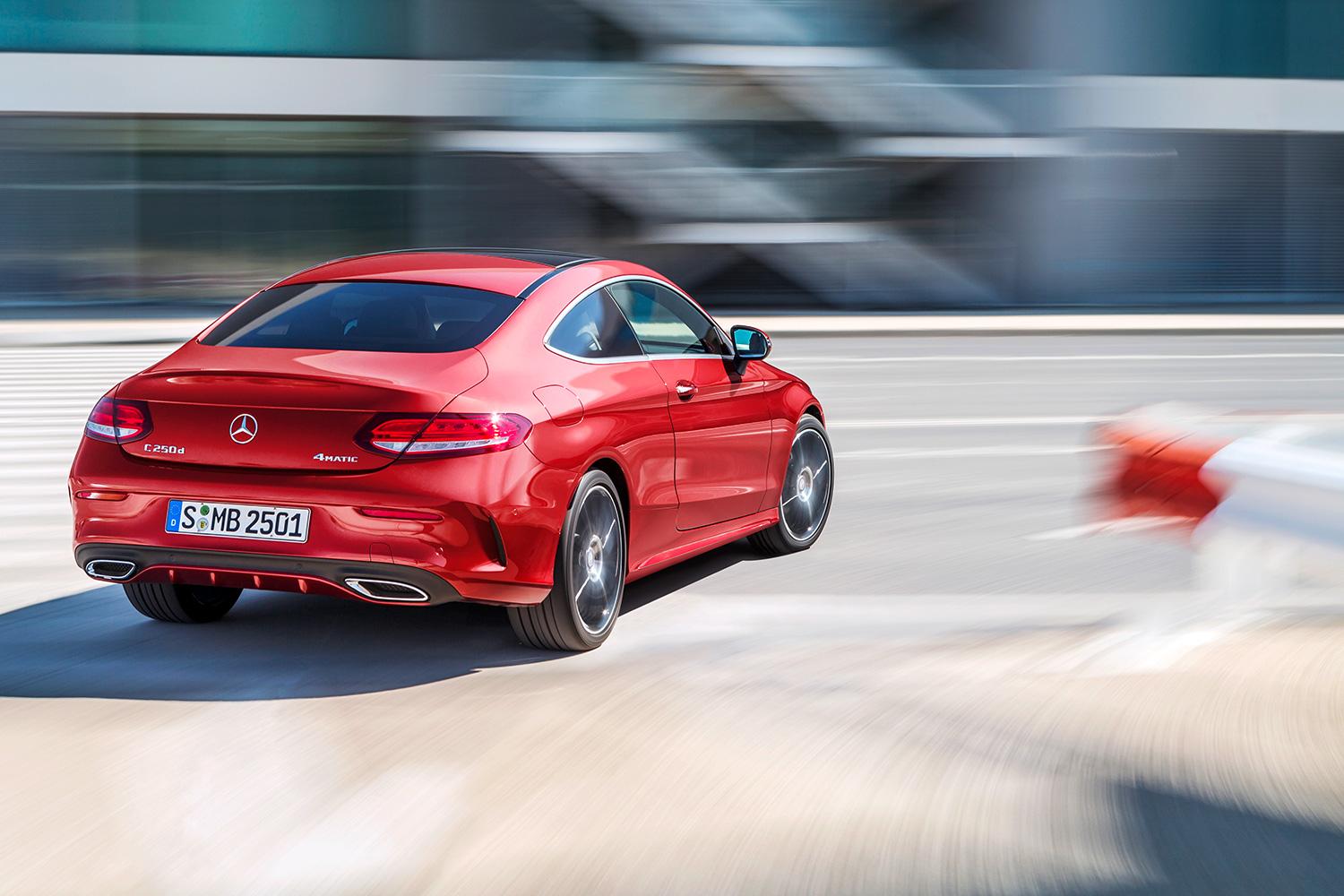Mercedes-Benz sedans are packed with technology, but for those who want their car to have a bit of style, the coupes are the only choice. Mercedes revamped its C-Class sedan last year, but the coupe is only now getting similar updates.
The 2017 Mercedes-Benz C-Class Coupe will be unveiled next month at the 2015 Frankfurt Motor Show, and go on sale in the U.S. next spring. Its spec sheet reads like that of the current C-Class sedan, but shaving away two doors gives this car a completely different look.
It’s actually pretty remarkable just how much foregoing rear doors changes the look of this Benz. From the front, it’s largely similar to the C-Class sedan, but moving towards the back things start to transition into something of an S-Class Coupe imitation, making the overall look a little more interesting.
The U.S. C-Class Coupe lineup will largely mirror that of the sedan. That means buyers will get to choose from four-cylinder C300, six-cylinder C400, and hot-rod AMG models. The coupe won’t be offered with the plug-in hybrid powertrain available on the sedan, and details on the AMG model will come later.
Just as in the sedan, the C300 will use a 2.0-liter turbocharged four-cylinder engine producing 241 horsepower and 273 pound-feet of torque. Expect the C400 to use a 3.0-liter turbocharged V6, with 329 hp and 354 lb-ft. A seven-speed automatic transmission is mandatory; at launch the C300 will be offered only with rear-wheel drive, while the C400 will launch with Mercedes’ 4Matic all-wheel drive only.
The coupe also gets its share of gadgets, including available self-leveling air suspension, a 360-degree camera system, and air conditioning that’s linked to the navigation system. When the system detects a tunnel, it automatically closes the air recirculation flap.
A host of electronic aids also bring the C-Class Coupe closer to Mercedes’ ideal of a self-driving car. Standard Attention Assist monitors the driver for signs of fatigue, Collision Prevention Assist warns of an impending crash, and Adaptive Brake Assist can provide autonomous braking in certain situations, at speeds up to 124 mph.
Other available tech includes Distronic Plus adaptive cruise control, which can adjust speed and steering to keep a safe following distance and prevent the car from straying out of its lane. There’s also Enhanced Lane Keeping Assist, and Pre-Safe Brake, which scans for pedestrians and other obstacles at lower speeds and can also apply the brakes automatically.
Like the C-Class sedan, the coupe features a version of Mercedes’ COMAND infotainment system, with a fixed display screen mounted on top of the dashboard. The carmaker’s mbrace2 interface and a suite of smartphone-compatible apps provide added connectivity.
The 2017 Mercedes-Benz C-Class Coupe goes on sale in the U.S. next spring. Pricing and further details will be released closer to that time.
